The financial plan of the government is reflected in the budget in which sector of the country in a particular financial year. Starting from the first budget of independent Bangladesh till last year, it can be seen that the size of each budget has increased with time.
According to economists, although the amount of money in the budget has increased, the budget has not increased as a proportion of the economy. According to them, there has not been the ‘qualitative’ change that should have taken place in budget formulation and implementation over time.
Looking at the history of budget formulation in the last five decades, it can be seen that there has been a change in the formulation of economic plans.
In the post-independence era where industrialization was thought to depend on the state-owned sector, with the change of government, the role of the private sector has been enlarged in place of the state.
The first budget of Bangladesh
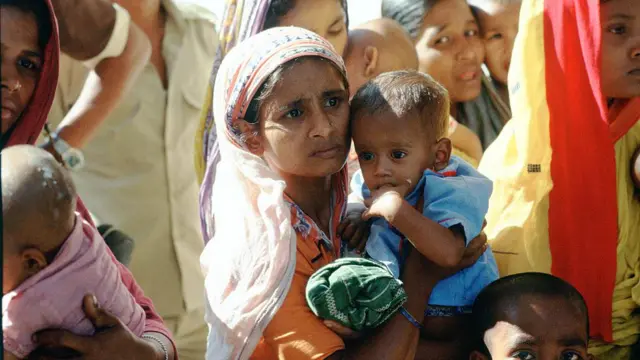
IMAGE SOURCE,GETTY IMAGES
The first national budget was presented in the National Parliament of Bangladesh on 30th June 1972. The then Finance Minister Tajuddin Ahmed presented the first budget of independent Bangladesh in 1972-73 fiscal year.
According to the information of the Ministry of Finance – the amount of the first budget of the country was 786 crores. After 50 years of independence, the size of this budget is more than 6 lakh crore rupees.
Economists refer to the budget prepared by Prime Minister Tajuddin Ahmed as a ‘historic budget’ of Bangladesh after independence.
“It has been only six months since the country was freed, at such a time the budget was made. Where the government did not have foreign exchange reserves, revenue collection was not the same. The government’s foreign aid was also uncertain,” Dr. Debapriya Bhattacharya, economist and special fellow at the Center for Policy Dialogue, told BBC Bangla.
“On the one hand, there was the issue of resettlement of refugees within the uncertain resource situation, along with the rehabilitation or reconstruction of infrastructure that was in a dilapidated state – thousands of bridges, as well as agricultural industries, etc.,” said Mr. Bhattacharya.
Economist Debapriya Bhattacharya commented that the country’s first budget was small in size but a ‘quality’ budget was prepared at that time.
MM Akash, economics professor of Dhaka University, describes the budget during the regime of Sheikh Mujibur Rahman from 1972-1975 after independence as “budget for moving towards socialism”.
“Then there was the issue of rehabilitation. The budgets of Bangabandhu’s regime were dominated by the state sector within a mixed economy. So that there was an urge to reduce discrimination, there was an urge to create employment. There was an urge to reduce foreign domination. There was an urge to be self-reliant,” said Professor Akash.
At that time the government was very cautious about taking foreign aid and emphasized on rationing and fair prices rather than market implementation.
The size of the budget has increased

Tajuddin Ahmed presented a total of three budgets during his tenure as Finance Minister. The allocation in those budgets was 786 crores, 995 crores and 1000 crores (approx.) respectively.
In the span of 51 years of independence, the budget presented for the fiscal year 2022-23 was Rs.678,640 crores.
Finance Minister AHM Mustafa Kamal is going to present the budget for the fifth time. The potential size of the proposed budget for the financial year 2023-24 is about 7 lakh 61 thousand 785 crores.
After the caretaker government came in 2077, the budget allocation was increased by 30 thousand crore rupees in one year. In 2006-07 financial year M Saifur Rahman gave a budget of Tk 69740 crore, in 2007-08 financial year Mirza Azizul Islam gave a budget of Tk 99962 crore. In the post-independence period, services had the largest two-year budget gap. Since then, the budget gap has been increasing every year.
Finance Minister Abul Mal Abdul Muhith presented the first lakh crore budget after the fiscal year 2009-2010. After that, the budget allocation increased by at least 25 to 30 thousand crore rupees every year.
After independence, the budget came to the quota of thousands of crores in the hands of the finance minister Tajuddin Ahmed and later it was taken to the quota of lakhs of crores by the current finance minister of Awami League, Abul Mal Abdul Muhit. Mr. The budget presented by Muhith for the fiscal year 2009-2010 was described as the ‘first ambitious budget’.
M Saifur Rahman and Abul Mal Abdul Muhit have presented the largest number of budgets in the history of the budget of Bangladesh. Both of them presented 12 budgets each.
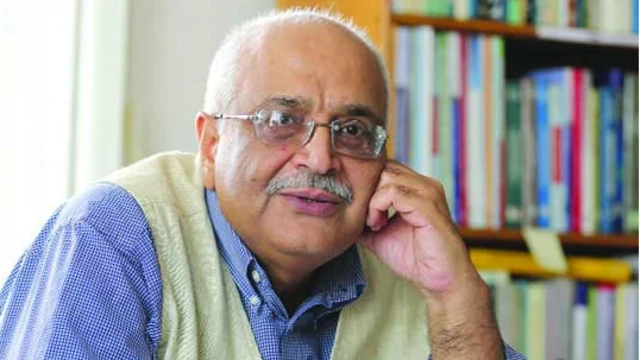
IMAGE SOURCE,CPD
Dependence on individuals has increased
According to economists, the first major ‘policy shift’ or ‘policy shift’ in budgeting occurred in the mid-seventies. The role of the public sector has been limited and the role of the private sector has been enlarged.
Devapriya Bhattacharya used to say that “the responsibility that the state has for the citizens has gradually been left to the private sector. First it was in the field of ownership and later it was also observed in the field of market management. And then through foreign relations.”
The budget for the fiscal year 1972-1973 was mainly rehabilitation and reconstruction in which the revenue and expenditure accounts were different.
Economists believe that Ziaur Rahman tried to keep some part of the mixed economy in the budget of his tenure. There, the private sector and the state sector were given equal importance.
“Ziaur Rahman said in the budget about returning the state-owned factories to the private sector, ‘If I find a factory profitable and even after becoming state-owned, why should I give it to the private sector, then I can use the profit for education in the social sector,'” said Mr. the sky
The trend of foreignization and market economy gained momentum during the regime of General HM Ershad. Which is reflected in the budget.
Economist Fahmida Khatun opined that “various governments moving away from the socialist thinking of the seventies is reflected in the budget. And the government is slowly moving towards a free market economy”.
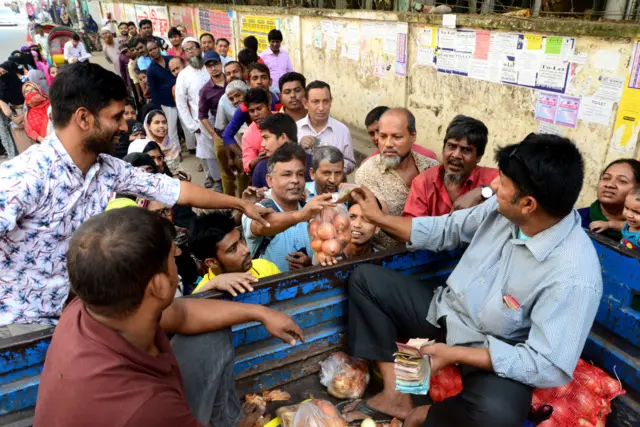
IMAGE SOURCE,GETTY IMAGES
Access to the free market
Although the global thinking was not reflected in the early budget of Bangladesh, structural changes are seen in the budget since the late eighties.
The process of divestment from state-owned enterprises to the private sector that began in the 1980s accelerated in the 1990s.
“Since the mid-eighties when the export of the ready-made garment industry started, we continued to tap into the opportunities that existed in the global economic system. But we got involved in the quota-free access that the World Trade Organization created. I joined the open market economy in the mid-eighties and expanded it further in the nineties,” said Fahmida Khatun.
According to him, every government that came after has maintained roughly the same policy i.e. free market economy.
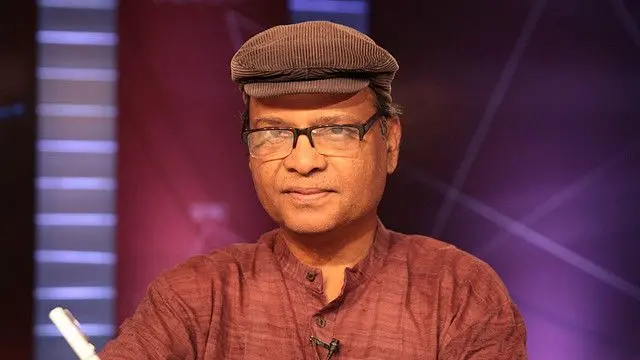
Professor MM Akash considers the budget of Ershad government’s regime to be a budget to support the structural reform program of the World Bank and IMF.
“Withdraw all subsidies, return all factories to the private sector, artificially set up the private sector with money from the Bangladesh Microcredit Corporation, the industrial banks of Bangladesh, and in no time some people became owners of quite a lot of money. The budget increased. But seeing that the budget money is not collected, the dependence on foreign aid increased,” said Mr. the sky
According to him, there was a foreign dependent budget system at that time. It was a challenge to get out of that donor dependent budget and make an independent budget.
Emphasis on human resources
Economists say that a review of decades of budgets shows that Bangladesh has increased focus on infrastructure and social security. Besides, big development projects are also being undertaken
He said – “Gradually a consensus has developed within the country – attention should be paid to human resources. Education should focus on health. I have seen this since the eighties,” said Debapriya Bhattacharya
Since that time, Bangladesh has been a pioneer in the field of education and health, so it has been possible to achieve MDG targets, he said.
“In the 15 years of the current government, we have seen a lot of emphasis on physical infrastructure. Along with roads, bridges, etc., electricity has also been emphasized. All in all, there is a consensus on economic planning in Bangladesh on several issues.
Mr. Bhattacharya.
According to him, a consistency or regularity can be observed in the recent budget allocation.
“Revenue will increase by ten percent, expenditure will increase by ten percent. It will be given in every sector. There will be some big projects, 70 percent will go and the remaining percent will be divided among other projects – this is how things are done,” said Debapriya Bhattacharya.
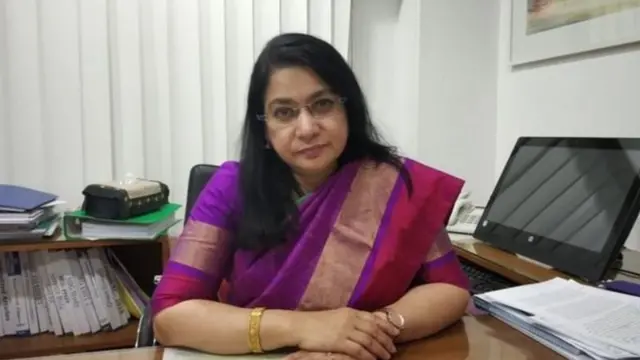
According to economists, the budget is now going through a much more principled framework For example, five-year plan, SDG or various sectoral plans of the government are also being prioritized
Fahmida Khatun was saying “Budget has increased, capacity space has definitely been created – demand space has been created and activities are going on in many places. Economic activity has expanded”.
But after fifty years, experts are questioning how much the ‘expectation’ created with the budget is being implemented.
“Making a big budget but I don’t see any change, no improvement in budget implementation rate. Even if money is given to the health sector, it cannot be implemented. There is no qualitative change in implementation except the size increase.
Fahmida Khatun commented that the per capita income of the people has increased, the size of the GDP has increased, and the tax has not changed as much as it should have.
According to economists, the qualitative change that was needed in the budget did not happen.
“In terms of revenue where will the increased revenue come from? Will it come from direct taxes or indirect taxes? Those who have the ability to pay will pay or those who have limited ability will continue to pay VAT?
Or will I impose wealth tax? What are the structures of the allocations being made – are the buildings that I am allocating for education or will we spend on professional development of teachers? These are important.”
Economists believe that although the budget has increased in terms of money, the budget has not increased as a proportion of the economy.
Debapriya Bhattacharya was saying “We are stuck at 14/15 percent of GDP. Since we cannot go beyond 10 percent of GDP in terms of taxes, we are running a 5 percent deficit budget. To make big changes in the budget, we need to increase revenue and learn to spend quality with that revenue”.
Economists believe that the budget that the government is going to present is a big challenge in this political and economic situation.
In the words of Prof. MM Akash, “Inflation going on now, Ukraine war, dollar crisis in the post-Corona situation – the government is in a situation of ‘sham rakhi na kool rakhi’.” This economist thinks that this year’s budget is a juncture budget.